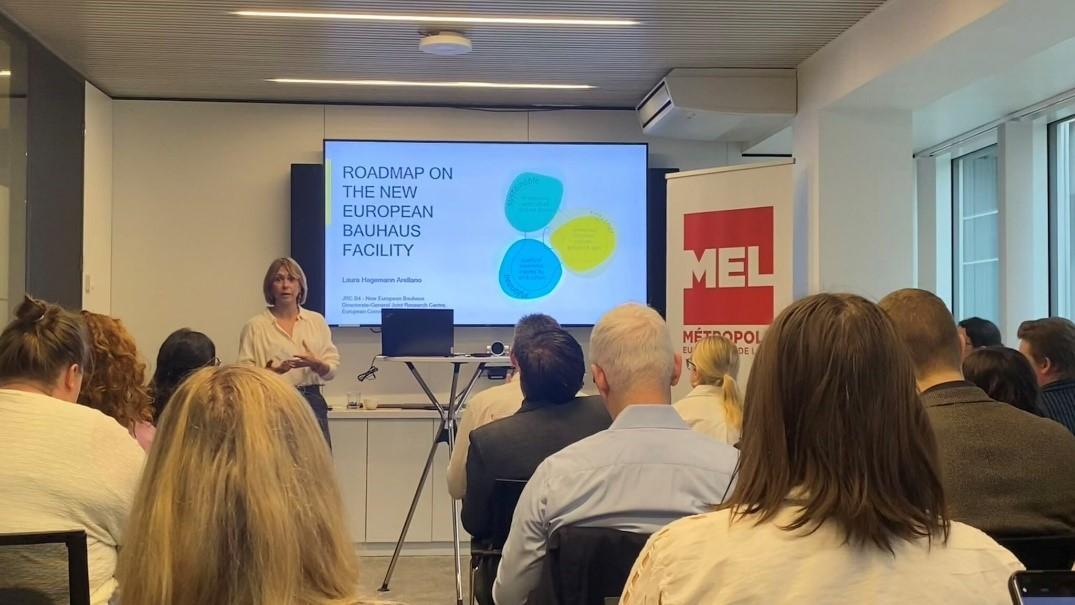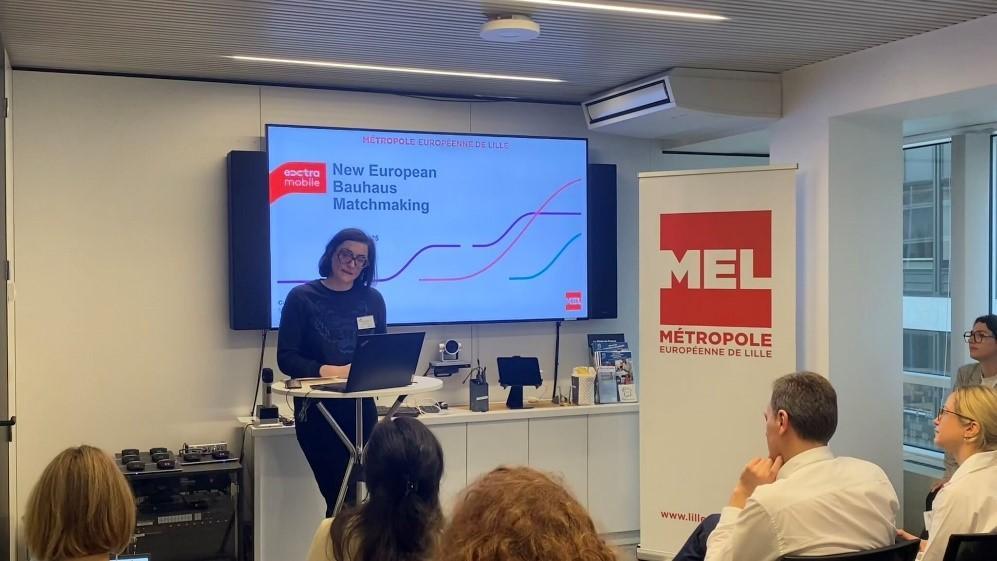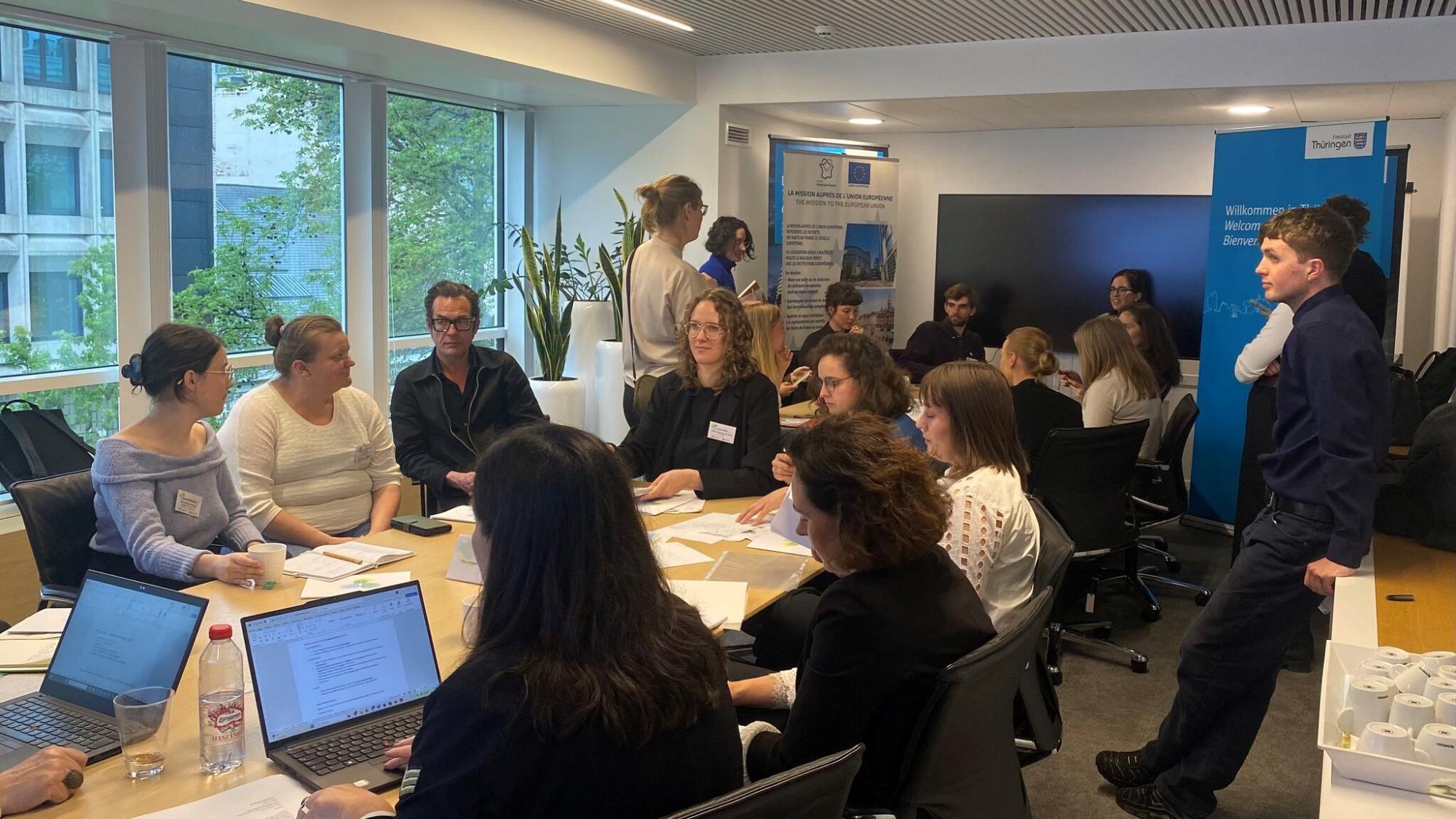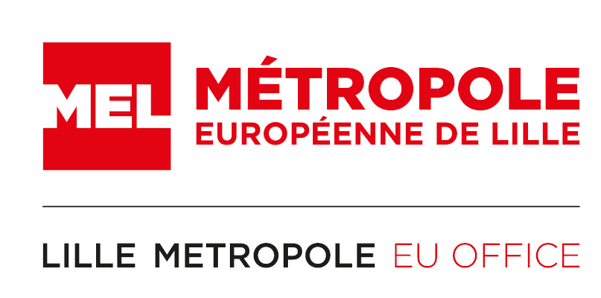
On the 24th of April, Lille Metropole EU Office co-organised with Gothenburg European Office a NEB Facility matchmaking event.
The event kicked off with Laura Hagemann Arellano from the Joint Research Centre of the European Commission presenting the NEB Facility, its objectives, principles, and upcoming calls.
What is the NEB Facility ?
The NEB Facility will run from 2025 to 2027, providing financial support and a strategic framework to achieve the NEB objectives. The Roadmap aims to be the operational plan for how the Commission, with the support and active engagement of the Member States and NEB stakeholders, will implement the NEB Facility. It provides a picture of the actions foreseen for 2025-2027. These actions have been fine tuned according to the input provided during the consultations undertaken in the course of 2024, to which MEL responded.
It will support projects under three objectives: (1) transforming places with communities, enhancing social acceptance of the green transition and democratic processes at local level; (2) supporting innovation, providing circular and regenerative solutions for the green transition; and (3) enabling change, exploring sources of funding and developing the necessary skills to make this happen.
You can find more information about this new instrument on the European Commission website.

The cities have project ideas !
Following Commission’s presentation, five European local authorities pitched their projects ideas to find partners for the upcoming calls.
Kristine Schollert, from the City of Copenhagen, presented the project « RE:PLACE », which focuses on how a sense of belonging can help make the city resilient. The research projet studies how a place's design can create a feeling of belonging.
Maria Rodríguez Parareda, from the Barcelona Provincial Council, pitched two different projects. One is in the city of Sant Boi and called « L’Olivera DigitALL ». The authorities want to transform an existing building into an innovative education public facility with services that facilitate the digital transition. It is intended to become a green, neutral-emissions building with a spirit of full circularity.
The second is in the city of Masquefa. The City Council wants to design the future of a space in the city and to establish a roadmap to define its transformation and regeneration into a new urban area of a residential nature and facilities.
Flora Pouget, from Lille Metropole, introduced the new transport network project « Extramobile », with a particular focus on its central cultural component. To help transform several of the neighbourhoods where the new tramway lines will be built, and to encourage the population to support them, Lille Metropole will be developing cultural initiatives along the entire length of the lines.

Malin Finlöf and Cecilia Helsing, from the City of Gothenburg, focused on the Transition lab in Frihamnen and how it can transform the sense of belonging in the neighbourhouds.
Liesbeth Bultinck, from the City of Ghent, ended the round of presentations with two projects ideas. One is about creating a network of neighbourhoods for innovative policies on gentrification. The second aims at improving and increasing energy-efficient housing through a master plan and the concrete demolition and reconstruction of social high-rise buildings in the neighborhood around ‘the Watersportbaan’.
An interactive session followed, where participants engaged in moderated discussions to identify synergies and cooperation opportunities related to upcoming NEB Facility calls. Each discussion focused on a selected NEB facility topic, and with three round organised, participants were able to explore different calls.

Avenues for collaboration have been identified, so let's keep up the good work!

